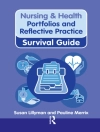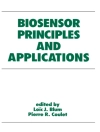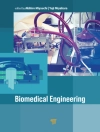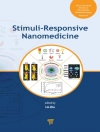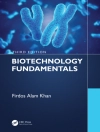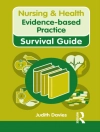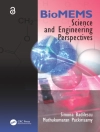A nursing diagnosis is defined as a clinical judgment about individual, family or community responses to actual or potential health problems or life processes which provide the basis for selection of nursing interventions to achieve outcomes for which the nurse has accountability (NANDA-I, 2009). Accurate and valid nursing diagnoses guide the selection of interventions that are likely to produce the desired treatment effects and determine nurse-sensitive outcomes.
Nursing diagnoses are seen as key to the future of evidence-based, professionally-led nursing care – and to more effectively meeting the need of patients. In an era of increasing electronic patient health records, standardized nursing terminologies such as NANDA-I, NIC and NOC provide a means of collecting nursing data that are systematically analysed within and across healthcare organizations and provide essential data for cost/benefit analysis and clinical audit.
Nursing Diagnoses: Definitions and Classification is the definitive guide to nursing diagnoses, as reviewed and approved by NANDA-I. Each nursing diagnosis undergoes a rigorous assessment process by NANDA-I’s Diagnosis Development Committee, with stringent criteria used to indicate the strength of the underlying level of evidence.
Each diagnosis comprises a label or name for the diagnosis, a definition, defining characteristics, risk factors and/or related factors. Many diagnoses are further qualified by terms such as risk for, effective, ineffective, impaired, imbalanced, self-care deficit, readiness for, disturbed, decreased, etc.
The 2012-2014 edition is arranged by concept according to Taxonomy II domains, i.e. Health promotion, Nutrition, Elimination and exchange, Activity/Rest, Perception/Cognition, Self-perception, Role relationships, Sexuality, Coping/ Stress tolerance, Life principles, Safety/protection, Comfort, and Growth/development.
The 2012-2014 edition contains revised chapters on NANDA-I taxonomy, and slotting of diagnoses into NANDA & NNN taxonomies, diagnostic reasoning & conceptual clarity, and submission of new/revised diagnoses. New chapters are provided on the use of nursing diagnoses in education, clinical practice, electronic health records, nursing & health care administration, and research . A companion website hosts related resources.
Key features
* 2012-2014 edition arranged by diagnostic concepts
* Core references and level of evidence for each diagnosis
* New chapters on appropriate use of nursing diagnoses in clinical practice, education, administration and electronic health record
* 16 new diagnoses
* 11 revised diagnoses
* Aimed at students, educators, clinicians, nurse administrators and informaticians
* Companion website available, including a video on assessment, clinical reasoning and diagnosis
İçerik tablosu
NANDA International Guidelines for Copyright Permission xvii
Preface xix
Introduction xxii
How to Use This Book xxii
Frequently Asked Questions xxiii
Acknowledgments xxv
Chapter Authors xxv
Chapter Reviewers xxv
New Nursing Diagnoses, 2012-2014 xxvi
Revised Nursing Diagnoses, 2012-2014 xxvii
Retired Nursing Diagnosis, 2012-2014 xxviii
Changes to Slotting of Current Diagnoses within the NANDA International Taxonomy II, 2012-2014 xxviii
Changes to Slotting of Current Diagnoses within the NANDA-I/NIC/NOC Taxonomy xxx
Revisions to Diagnoses within the NANDA International Taxonomy 2009-2011 xxx
PART 1 THE NANDA INTERNATIONAL TAXONOMY 1
Introduction 3
T. Heather Herdman
Contributors to the NANDA-I Nursing Diagnosis Taxonomy 3
Chapter 1 The NANDA International Taxonomy II 2012-2014 49
T. Heather Herdman, Gunn von Krogh
PART 2 EDUCATION AND IMPLEMENTATION OF NANDA INTERNATIONAL NURSING DIAGNOSES WITHIN PRACTICE, ADMINISTRATION, RESEARCH, INFORMATICS AND EDUCATION 67
Chapter 2 Nursing Assessment, Clinical Judgment, and Nursing Diagnoses: How to Determine Accurate Diagnoses 71
Margaret Lunney
Chapter 3 Nursing Diagnosis in Education 90
Barbara Krainovich-Miller, Fritz Frauenfelder, Maria Müller-Staub
Chapter 4 The Value of Nursing Diagnoses in Electronic Health Records 99
Jane M. Brokel, Kay C. Avant, Matthias Odenbreit
Chapter 5 Nursing Diagnosis and Research 114
Margaret Lunney, Maria Müller-Staub
Chapter 6 Clinical Judgment and Nursing Diagnoses in Nursing Administration 122
T. Heather Herdman, Marcelo Chanes
Chapter 7 Nursing Classifi cations: Criteria and Evaluation 133
Matthias Odenbreit, Maria Müller-Staub, Jane M. Brokel, Kay C. Avant, Gail Keenan
PART 3 NANDA-I NURSING DIAGNOSES 2012-2014 145
International Considerations on the Use of the NANDA-I Taxonomy of Nursing Diagnoses 147
T. Heather Herdman
PART 4 NANDA INTERNATIONAL 2012-2014 493
NANDA International Think Tank Meeting 495
NANDA International Position Statements 498
Chapter 8 The Process for Development of an Approved NANDA International Nursing Diagnosis 499
Leann M. Scroggins
Index 525
Yazar hakkında
NANDA International is a global network of nurses dedicated to developing terminology to reflect nurses’ clinical judgement and to improving the quality of nursing care through evidence-based practice. It was established in 1984. For more information seewww.nanda.org.


